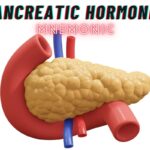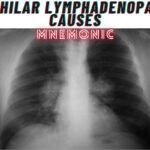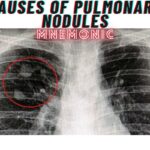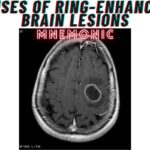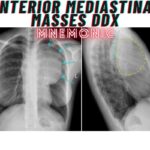This blog post contains High-Yield Last Minute MRCP Facts which you can use for a quick revision before the exam. These are basically last minute cramming facts for doctors who are about to take the MRCP Part 1 or 2 exam. This list of important MRCP facts has been prepared by Dr Faisal Gamal Hemeda (MBCHB, MRCP) and it is aimed to providing a list of high-yield topics which are very much likely to be tested in the MRCP Part 1 & 2 exams.
For those who have not been following our blog, here are a few posts published under HIGH-YIELD:
**RECOMMENDED READING**
MRCP Part 2 Question Bank PDF Free Download (6000+ Questions)
Dr Khaled Magraby MRCP Notes: Step Up to MRCP Review Notes
List of Important Topics for MRCP Part 2
100 Cases in Radiology PDF Free Download (MRCP Part 2)
High-Yield Last Minute MRCP Facts

Below are the 89 high-yield last minute MRCP Part 1 & 2 facts which you must go through once in the final days of your MRCP exam preparations. GOOD LUCK! 🙂
** You may download these high-yield last minute MRCP facts by clicking the Google Drive link mentioned below:
DOWNLOAD LINK
1. Osteoporosis is the most common cause of fracture of neck of femur and is not associated with any specific abnormality in the standard bone biochemistry profile.
2. Fibrosing alveolitis is the most common pulmonary manifestation of rheumatoid arthritis.
3. Impairment in renal function in Hepatorenal syndrome.The hallmark is oliguria and progressive decline in renal function. The urine is typically free of protein or any other
sediment.
4. Long-term haemodialysis is associated with carpal tunnel syndrome. is the most common complication
5. The most likely cause of bacterial meningitis in adult patients with neutropenia :
Listeria monocytogenes.
6. the most frequent cause of a nosocomial wound infection: Insufficient hand disinfection
7. **Tuberculous arthritis usually affects children aged 2–5 years. The hip is one of the most frequently affected joints.
8. **Meningitis due to enterovirus and meningococcus (N. meningitides) are the most likely in this age group (28 years)
9. **Tuberculous meningitis is rare in the UK and the CSF typically shows a markedly raised protein (> 1 g/l), a low glucose (< 50% serum) and a lymphocytosis.
10.**Streptococcus meningitis is the commonest cause of meningitis in those over 40 years of age; very high neutrophil counts are often seen in the CSF, which has a
high protein and low glucose level.
11.**Factors predisposing to digitalis toxicity are advanced age, hypoxia, hypokalemia, hypomagnesaemia, hypercalcaemia, hypothyroidism, amyloidosis and renal
failure. The most common precipitating factor is hypokalemia.
12.** In Hodgkin’s disease Lymphocyte depleted has the worst prognosis. It is the least common variant and typically occurs in older people.
13.**The commonest mutation in patients with cystic fibrosis
(CF) is the Delta-F508 mutation.
14.**in systemic lupus erythematosus Recurrent pleurisy and pleural effusions are the most common manifestations and are often bilateral.
15.**Cryptosporidium infection in HIV-positive patients along with cytomegalovirus, is the commonest cause of HIV-related diarrhoea and tends to present when the CD4 count is less than 100.
16.**Diarrhoea and flushing, occurring separately or together, are the most frequent presenting features of carcinoid syndrome (approximately half of all patients).
17.**Focal necrotising glomerulonephritis is the characteristic renal lesion of generalised Wegener’s granulomatosis. Typically, it presents with deteriorating renal function that
progresses to renal failure within 3 months.
18.**Glomerulonephritis is a common occurrence in chronic Schistosomamansoni infection in Brazil, especially in patients with hepatosplenic disease
19.**Tremor in the legs is a useful sign as it is almost always associated with idiopathic Parkinson’s disease. The tremor is typically a rest tremor unlike benign essential tremor,
where actions such as drinking a cup of tea make the tremor worse.
20.**Pericardial effusions are more common in patients with rheumatoid arthritis than constrictive pericarditis and acute pericarditis.
21.**The earliest lesions to be detected in diabetic retinopathy are usually dot haemorrhages (capillary microaneurysms) and venous dilatation.
22.**Hypertrophic cardiomyopathy is the single, most common cause of sudden death in young athletes.
23.**the most common cause of paranoid psychosis with visual hallucination: Alcohol withdrawal
24.**Basal cell carcinomas are the most common malignant skin tumour and are related to excessive skin exposure. They are common later in life and may present as a slow-
growing nodule or papule.
25.**The most common type of thyroid cancer is papillary cancer, which accounts for approximately 70% of all thyroid cancers.
26.***Open angle glaucoma is 100 times more common than angle closure glaucoma, and is asymptomatic until central visual loss appears at the end stage.
27.**a high white cell count with smear cells and mature lymphocytes. This is characteristic of chronic lymphocytic leukaemia.
28.**Chronic lymphocytic leukaemia
>Constitutes 25% of all leukaemias. It is chiefly a disease of the elderly
>It is characterised by an accumulation of mature lymphocytes in the peripheral blood, bone marrow, spleen, liver and lymph nodes
>Clinical findings include painless, symmetrical lymphadenopathy, hepatosplenomegaly, pruritus and symptoms due to bone marrow failure
>Blood film will show large numbers of mature lymphocytes and smear or smudge cells. Anaemia and thrombocytopenia are common
>Hypogammaglobulinaemia is common and monoclonal paraproteins are occasionally seen
>Staging is by the Binet or Rai systems and depends on number of areas involved and full blood count results
>Median survival is 3–5 years and one-third die of causes other than the leukaemia
>In early stages no treatment is required. In later stages and in rapidly progressive disease treatment is with oral or intravenous chemotherapy such as chlorambucil or
fludarabine. Stem cell transplantation is an option in younger patients
29.**IgG is the most common paraprotein in myeloma.
30.**Myeloma
>Median age of diagnosis is 70 years
>Diagnosis is made in the presence of two of monoclonal protein in blood or urine, 10% plasma cells in bone marrow and lytic bone lesions
>Other clinical features are bone disease, hypercalcaemia, renal failure, bone marrow failure and immune paresis
>5 year survival is only 25%
>Treatment is supportive, chemotherapy (which can be oral or intravenous) and autologous or allogeneic stem cell transplantation
>Thalidomide has recently been used in relapsed and refractory disease
31.***Adrenergic inhibitors used in hypertension: Peripheral neuronal inhibitors: Reserpine, Guanethedine Central adrenergic inhibitors: M-dopa, Clonidine,
Guananbenz, Guanafacine Alpha-receptor blockers:
> Alpha 1 and 2 receptor blockers: Phenoxybenzamine, phentolamine
> Alpha 1 blockers: Doxazosin, Terazosin, Beta blockers
> Alpha and beta blockers: Labetalol
32.**Polycythaemiarubravera:
· Splenomegaly
· Aquagenic pruritus
· Bleeding
· Gout
· Peptic ulcer
· Conversion to myelofibrosis or leukaemia in 10%
33.**Causes of Chorea
Neurodegenerative:
Huntington’s disease
Benign hereditary chorea
Dentatorubropallidoluysian atrophy
Inherited metabolic:
Wilson’s disease
Lesch-Nyhan disease
Neuroacanthosis
Hypoxic/ischaemia:
Stroke
Hypotension
Vasculitis Sickle cell disease
Polycythaemia
Toxic: Copper & Mercury
Drug induced: Oral contraceptive pill
L-Dopa
Neuroleptics
Anticholinergics
Cocaine
Amphetamines
Infection:
Sydenham’s chorea
Meningitis
Viral encephalitis
Mycoplasma pneumonia
Legionella
Toxoplasmosis
Creutzfeld-Jacob disease
Autoimmune:
SLE
Primary anti-phospholipid syndrome
VasculitisBehcet’s
Hashimoto’s thyroiditis (unrelated to hyperthyroidism)
Endocrine:
Thyrotoxicosis
Chorea gravidarum
Addison’s disease
Metabolic:
Hypocalcaemia
Hypomagnesaemia
Hyper/hypoglycaemia
Hyper/hyponatraemia
34.**Causes of sudden cardiac death
· Arrhythmia
-Acute myocardial infarction
-Long-QT syndromes
-Hypertrophic cardiomyopathy
-Commotiocardis
-Coronary anomalies
-Myocarditis
· Obstruction
-Atrial myxoma
-Infective endocarditis
-Dissection
35.**In Hypertrohpic Cardiomyopathy
· Combination of palpable LVS4 and then double systolic
apical impulse due to the mid systolic outflow obstruction
· It increases in phase II of the valsalvamaneouver (the
straining phase) and decreases in phase IV (post release
phase)
· Severe diastolic dysfunction
· Children have a worse prognosis than affected adults
because of greater incidence of SCD
· As in severe AS (because of greater myocardial oxygen
demand)
36.**5 histological stages have been described (WHO
Classification) and treatment depends on this. There is a
lack of clear correlation between clinical manifestations
and the severity of renal involvement. Biopsy findings
guide the selection of immunosuppressive therapy.
WHO Classification of Lupus Nephritis
Stage I ،V Lupus nephritis without histological changes
Stage II ،V Mesangial lupus nephritis
Stage III ،V Focal proliferative lupus nephritis
Stage IV ،V Diffuse proliferative lupus nephritis
(commonest & most severe form)
Stage V ،V Membranous lupus nephritis
Conditions that recur in the transplanted kidney
Focal glomerulosclerosis
Mesangiocapillary glomerulonephritis
Rapidly progressive (Crescentic) glomerulonephritis
IgA nephropathy
Alport،¦s syndrome
Cystinosis
Oxalosis
Lupus nephritis
Goodpastures syndrome
Wegner،¦s granulomatosis
**The most common renal disease in HIV is collapsing
FSGS in which there is focal sclerosis associated with
collapse down of the glomerulus leaving a space in
Bowman’s capsule. It has a poor prognosis and usually
leads to ESRF.
37.**The indications for a native nephrectomy prior to renal
transplant are:
1. Uncontrolled hypertension where a differential renin
study shows that one or the other kidney is significantly
contributing to hypertension
2. Pyonephrosis
3. Recurrent attacks of clinically significant UTI
38.**Budd Chiari classically results in a very high protein
ascites but may cause a transudate.
39.**Transudates (protein < 30gdl or 75% of the serum
albumin) are due to:
– Reduced intravascular oncotic pressure
(hypoalbuminaemia)
– Increased intravascular hydrostatic pressure (cirrhosis,
portal hypertension, CCF)
40.**Teaching Notes for Question 15
Theme: Pancreatic Secretion
The roles of individual gut hormones are not completely
defined, but
cholecystokinin (duodenum & jejunum) increases gall
bladder contraction, increases colonic motility.
Gastrin (gastric antrum& duodenum) increases gastric acid
secretion,increases GI mucosal growth.
Secretin(duodenum & Jejunum) increases pancreatic
bicarbonate production.
VIP(enteric nerves)increased intestinal secretion,
splanchnic vasodilation.
Motilin(whole gut) increases small bowel motility.
Bombesin (gut & Pancreas)stimulates pancreatic exocrine
activity.
Neuropeptide Y (enteric nerves)regulates intestinal blood
flow.
Somatostatin (stomach & pancreas) inhibits secretion and
action of gut hormones.
Glucagon(pancreas)reduces GI motility
41.**In systemic lupus erythematosus (SLE). Joint
involvement is the most common clinical feature (> 90%).
42.**Prolactinoma is the commonest pituitary tumour,
making up 30% of all adenomas. Microadenomas occur
with increasing frequency in women, macroadenomas
more commonly in men.
43.**ASDs account for about 10-15% of all congenital cardiac
anomalies and are the second commonest congenital
heart disease seen in adults.
44.**VSDs are the commonest adult congenital heart disease.
45.**Frontal lobe dementia——>a failure to generate list
rapidly is the test of frontal lobe+difficulties with task
sequencing and executive skills. EXPRESSIVE aphasia,
primitive reflexes, perseveration, anosmia and changes in
personality.
Parietal lobe—————>Dyscalculia(inability to perform
mentalarithmetic) is a manifestation of the dominant
parietal lobe
Sensory inattention, apraxia, neglect,
astereognosis(unable to recognise an object by feeling it)
and visual field defects( typically homonymous inferior
quadrantanopia).
Temporal lobe———–> typical homonymous superior
quadrantanopia), Wernike’s (RECEPTIVE) aphasia, auditory
agnosia, and memory impairment
Occipital lobe———->cortical blindness(blindness due to
damage to the visual cortex and may present as Anton
syndrome where there is blindness but the patient is
unaware or denies blindness), homonymous hemianopia,
and visual agnosia( seeing but not percieving objects – it is
diffirent to neglect since in agnosia the objects are seen
and followed but cannot be named).
Homonymous hemianopia———-> occipital lobe
superior quanranopia—————->temporal lobe
inferior quanrtanopia——————->parietal lobe
9
46.**AUTOIMMUNE ASSOCIATIONS
Thyroid disease, IDDM, Addison disease, pernicious
anaemia, alopecia, vitiligo.
MULTIPLE ENDOCRINE NEOPLASIA
Autosomal dominant. The association of a number of
endocrine tumours.
MEN I MEN IIa
Parathyroid Adrenal (phaeochromocytoma, Cushing)
Pituitary (prolactin or GH or ACTH) Thyroid (medullary
carcinoma)
Pancreas Parathyroid hyperplasia
(Thyroid)
(Adrenal)
Fasting calcium level (??) Calcitonin level ? (medullary ca.
thyroid)
Look for phaeochromocytoma
MEN IIb is the same as MEN IIa, with Marfanoid features
and multiple neuromas.
Prophylactic total thyroidectomy is performed if the child
is known to carry the gene for MEN II.
47.**Adrenergic inhibitors used in hypertension:
Peripheral neuronal inhibitors: Reserpine, Guanethedine
Central adrenergic inhibitors: M-dopa, Clonidine,
Guananbenz, Guanafacine
Alpha-receptor blockers:
o Alpha 1 and 2 receptor blockers: Phenoxybenzamine,
phentolamine
o Alpha 1 blockers: Doxazosin, Terazosin
Beta blockers
Alpha and beta blockers: Labetalol
48.**Mixed connective tissue disease (MCTD) is an overlap connective tissue disease with features of SLE, polymyositis and progressive systemic sclerosis. The characteristic auto-antibody pattern is of high titre anti-RNP and speckled pattern ANA.
49.**The antiphospholipid syndrome is one of the commoner
causes of hypoadrenalism and may precipitate adrenal
infarction and haemorrage through adrenal vein
thrombosis.
50.**Biphasic high amplitude sharp waves are characteristic
of ceutzfeld-jacob disease.
51.**Causes of dilated pupils: Holme’sadie(myotonic pupils)
Third nerve palsy
drug poisons(atropine, CO, Ethylene glycol)
Causes of small pupils : horner;s syndrome
old age
pontinehaemorrhage
Argyl Robertson pupil
Drug poisons(opiate, organophosphate)
52.**Optic neuropathy————->central scotoma.
Optic tract lesion—————>incongroushomontmous
hemianopia.
Chiasmal lesion—————->bitemporal hemianopia.
optic radiation and occipital lobe—————->congrous
hemianopia.
53.**Listeria meningitis is typically associated with brain
stem signs. CSF shows neutrophilicpleocytosis, low glucose
and high protein.
54.**Nystagmus is defind as involuntary oscillations of the
eyes.
THis may be
1-Pendular: when the oscillations are equal in rate and
amplitude.
2-Jerking: when there are quick and slow phases(the quick
phase is used to define the direction).
pendularnystagmus is usually duee to loss of macular
vision, but maybe seen in diffuse brain stem lesions.
jerkingnustagmus which is of constant direction regardless
of the direction of gaze, suggests a labyrinthine or
cerebellar lesion.
Nystagmus which changes with the direction of gaze
suggests a widspread central involvement of vestibular
nuclei.
Jerking nystagmus present only on lateral gaze, and who’s
fast component is in the direction of gaze, indicates a
lesion of brain stem or cerebellum.
Nystagmus confined to one eye suggests a peripheral
lesion of the nerve or mucsle, or a lesion of the
mediallongitudinal bundle.
Nystagmus restricted to the abducting eye on lateral
gaze(ataxic nystagmus) is due to a lesion of the medial
longitudinal bundle between the ponds and midbrain as in
MS.
Nystagmusoccuring on upward gaze with the fast
component upwards( upbeat nystagmus) maybe due to a
lesion in the mid-brain at the level of the superior
colliculus.
Downbeat nystagmus(fast phase downward) suggests a
lesion in the lower part of the medulla. It’s therefore,
typical of the Arnold Chiari malformation.
**Causes of absent ankle reflexes and extensor plantars:
subacute combined degeneration of the cord
syphilitic taboparesis
friedreich’s ataxia
motor neuron disease
**Bicuspid aortic valve is perhaps the most common form
of congenital heart disease in adults(1-2% of population).
55.**hyporeflexia is a common clinical sign in patients with
hypercalceamia. Biphosphanates inhibit bone resorption
and are the first line pharmacological treatment of
hypercalceamia of malignancy.
56.**Premature epiphysial closure is a classical finding of
CAH.
57.**Flecainide is the drug most likely to restore sinus rhythm
in atrial fibrillation.
58.
**Lithium can produce Diabetes Insipidus and
hypercalceamia.
59.**Constrictive pericarditis produces an elevated JVP, with
prominent x & y descent.Pulsusparadoxus occurs less
frequently than in tamponade.
60.**Streptococcus bovis is a normal commensal of the GI
tract. However, S.bovisbactereamia and endocarditis has a
strong association with GI malignancy.
61.**Neisseria meningitidis( Gram negative diplococci)
Streptocuccus pneumonia(gram positive diplococci)
Rx:
gram stain unavailable: cefotaxime+- ampicillin
g +vecocci: Cefotaxime +vancomycin( S.pneumonia)
G +vebacilli:Ampicillin +gentamicin.(listeria)
G -vecocci: Benzyl penicillin.(N.meningitidis)
G -ve bacilli: Cefotaxime + gentamicin(heamophilus
influenza)
62.**Anaplastic carcinoma carries the worst prognosis in
thyroid cancer followed by thyroid medullary carcinoma in
MEN 2B.\
63.**ANCA abare of 2 types:
1- C-ANCA which correlates with antiproteinase 3
antibodies—>most specific for wegener’sgranulomatosis.
2- P-ANCA which correlates with anti myeloperoxidase ab.
P-ANCA/MPO ab. are highly sensitive and specific for
rapidly progressive glomerulonephritis and haemorrhagic
alveolar capillaritis.
AMA ab——–> PBC
Anticentromere ab.——–> CREST/scleroderma syndrome
ANA and anticardiolipin ab.———–>SLE.
**Clozapine is associated with agranulocytosis in app.1-2%
of patients
64.**Acute pancreatitis with worse prognosis:
Age>55
WCC>16,000
LDH>600
AST>120
Glu>10
65.**Pendred’s syndrome
Pendred’s syndrome is a rare autosomal recessive
condition characterised by incomplete oxidation of
trapped iodide prior to organification.
It may be confirmed by a positive perchlorate discharge
test.
66.**Anti 21 hydroxylase ab. found in about 80% of cases of
addison’s disease.
67.**SSRIs are a recognised cause of SIADH.
68.**Astimulatory mutation of thrGs protein alpha subunit
has been noted in approx.30% of GH secreting pituitary
tumours.
69.**Carcinoid tumours of the foregut unlike tumours of the
midgut are not associated with carcinoid syndrome but
may secret CRF/ACTH resulting in ectopic
cushing’ssyndrome.Other associated conditions include
somatostatinoma, Zollinger -Ellison syndrome and
Acromegaly.
70.**The antiphospholipid syn. is one of the commoner
causes of hypoadrenalism and may precipitate adrenal
infarction and haemorrhage through adrenal vein
thrombosis.
71.**Osteopenia is defined as a T score of between -1 and –
2.5 standard deviation below the bone mineral density of
a young female.Osteoporosis is defined as <2.5 SD.
72.**bcl-2 is an inhibitor of apoptosis.
fas and caspases promote apoptosis but are
nottumoursupressor genes
p53 is a tumoursupressor gene that inhibits mitosis and
promotes apoptosis.
ras is oncogene.
73.**Congenital adrenal hyperplasia is autosomal recessive
disorder.
74.**beta blockers are the mainstay of treatment in long QT
interval. The most commonly used drugs are propranolol
and nadolol.
75.**pulmonary complications of reumatoid arthritis”
Fibrosingalveolitis
pleural effusions
empyema
cryptogenic organising pneumonia
bronchiectasis
pulmonary ndules
76.**Fetal alcohol syn., Down’s syn., and congenital rubella
syn. are ass. with an ASD(Loud 2nd sound plus fixed
splitting.
77.**VIP
Achlorhydria
profuse diarrhea
hypokalaemic acidosis
hyperglycaemia
78.**Cavitations on pulmonary x ray:
squamous cell carcinoma
abscess(staph. aureus, Klebsiella, and pseudomonas
aeruginosa0
lymphoma
rheumatoid nodule
pulmonary infarction
wegener’sgranolumatosis
79.**p-ANCA is present in approx. 70% with UC and less than
20% of Crohn.
85% of untreated subjects with wegener’s will have c-
ANCA
80.**prerenal failure:
urinary Na<20
urine osmolality> 500
urine/plasma ratio>8and
urine/plasma creatinine>40\
Renal failure:
Na>40
osmolality urine<350
U/P ratio<3
U/P creat.<20
81.**Vitamin D resistant rickets is x linked dominant.
82.**infection is the commonest cause of death in multiple
myeloma.
83.**Antimicrosomal antibodies——>Hashimoto’s thyroiditis
84.
**Behchet’s disease is associated with HLA B5
85.**Venous beading, loops and soft exudates(cotton wool
spots) are ccharacteristic of preproliferative retinopathy.
Microaneurysms, Hard exudates and Macular edema
suggests background diabetic retinopathy
New vessels suggests proliferative retinopathy.
86.**Hexosaminidase A deficiency is ass. Tay-Sachs disease
Sphingomyelinase deficiency ->Nieman-Pick disease
Arylsulphatase-A Def. ass.
withmetachromicleucodystrophy
Iduronidase def. ass. with Hurler’s syn.
B-glucosidase def.—>Gaucher’s disease.
87.**Methotrexate is a well known cause of acute
pneumonitisand interstitial lung disease.
88.**Clopidegrolprevent platelet aggregation through
antagonism of the ADP receptor.
89.**Patients with painful, isolated third nerve palsy with
pupillary involvement are assumed to have posterior
communicating artery aneurysm until proven otherwise.

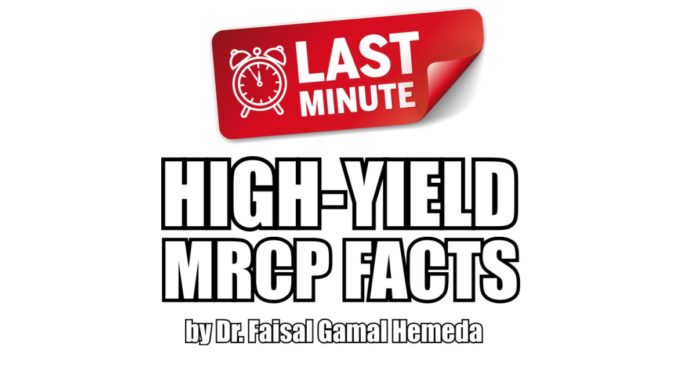

![MCQs for the New MRCPsych Paper A with Answers Explained (MasterPass) 1st Edition PDF Free Download [Direct Link]](https://www.medicosrepublic.com/wp-content/uploads/2022/06/MCQs-for-the-New-MRCPsych-Paper-A-with-Answers-Explained-PDF-1-696x365-1-218x150.jpg)
![MRCPCH 1: Essential Questions in Paediatrics Second Edition PDF Free Download [Direct Link]](https://www.medicosrepublic.com/wp-content/uploads/2022/06/MRCPCH-1-Essential-Questions-in-Paediatrics-PDF-1-696x365-1-218x150.jpg)
![Cases for PACES 3rd Edition PDF Free Download [Direct Link] Cases for PACES 3rd Edition PDF](https://www.medicosrepublic.com/wp-content/uploads/2019/05/Cases-for-PACES-3rd-Edition-PDF-218x150.jpg)
![Essential Revision Notes for MRCP 4th Edition PDF Free Download [Direct Link] Essential Revision Notes for MRCP 4th Edition PDF](https://www.medicosrepublic.com/wp-content/uploads/2019/03/Essential-Revision-Notes-for-MRCP-4th-Edition-PDF-1-218x150.jpg)


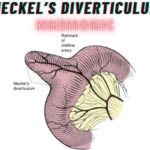
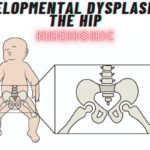
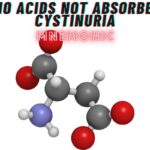
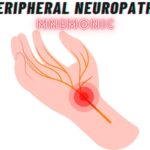
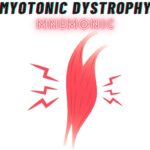
![Gerstmann Syndrome Features Mnemonic [Easy-to-remember] Gerstmann Syndrome Features Mnemonic](https://www.medicosrepublic.com/wp-content/uploads/2025/06/Gerstmann-Syndrome-Features-Mnemonic-150x150.jpg)
![Cerebellar Signs Mnemonic [Easy to remember] Cerebellar Signs Mnemonic](https://www.medicosrepublic.com/wp-content/uploads/2025/06/Cerebellar-Signs-Mnemonic-150x150.jpg)
![Seizure Features Mnemonic [Easy-to-remember] Seizure Features Mnemonic](https://www.medicosrepublic.com/wp-content/uploads/2025/06/Seizure-Features-Mnemonic-1-150x150.jpg)

![Recognizing end-of-life Mnemonic [Easy to remember]](https://www.medicosrepublic.com/wp-content/uploads/2025/06/Recognizing-end-of-life-Mnemonic-150x150.jpg)
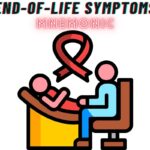
![Multi-System Atrophy Mnemonic [Easy-to-remember] Multi-System Atrophy Mnemonic](https://www.medicosrepublic.com/wp-content/uploads/2025/06/Multi-System-Atrophy-Mnemonic-150x150.jpg)
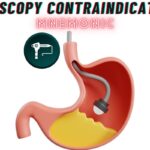
![How to Remember Southern, Northern, and Western Blot Tests [Mnemonic] How to Remember Southern, Northern, and Western Blot Tests](https://www.medicosrepublic.com/wp-content/uploads/2025/06/How-to-Remember-Southern-Northern-and-Western-Blot-Tests-150x150.jpg)
